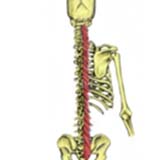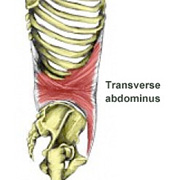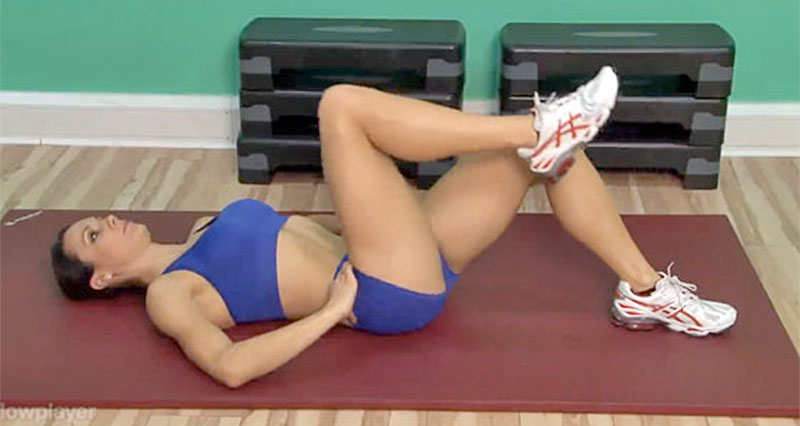Contracting the core muscles using the correct technique is essential to benefit from core strengthening exercises. This is the first stage of learning core stability exercises and sets the stage for all subsequent techniques. Here we explain some techniques to engage your core muscles.
What are the core muscles?

- The core muscles consist of the transversus abdominis muscle, multifidus, diaphragm, and pelvic floor muscles.
- These muscles should all be contracted simultaneously in order to gain maximum stability in the abdominal and lower back region.
- This is a vitally important step to get right from the beginning and may need some work at first as it is not a contraction that many people do consciously.
Read more about Core muscles.
Trying to rush exercises without correct core contraction will not give the same benefits.
Step 1: Palpating the transversus abdominus

In order to know whether you are contracting the correct muscles, it is necessary to be able to feel them working.
- Place your hands on the
bony parts at the front of your hips. These are known as your anterior superior iliac spines (asis ). - Move your hands in an inch towards your belly button and down an inch towards your toes. You should now be directly over the
transversus abdominus muscle. - As all the core muscles co-contract, when you feel your transversus contract the others will be contracting also. Keep your hands in this position and try each of the techniques below to find which one works for you.
How do I know if I’m contracting the core muscles?
When you contract your core correctly you should feel a gentle tightening under your fingers when they are in the above position. If you feel a bulge you are contracting too much. The correct level of activity in core muscles should be 30% of their maximum so that they have enough energy to contract continuously.
- To contract the right amount, use the techniques below to maximally contract, then release the contraction by half and then by half again.
- This takes practice but is extremely important to get right in the early stages.
- Failure to contract properly will mean unwanted contraction of the larger muscles surrounding the core. These will take over movements and thus defeat the aim of the exercises.
Techniques for contracting your core muscles
All the following movements should be carried out whilst lying on a firm surface. Bend your knees and hips so that you are lying comfortably on your back with your knees up and feet shoulder-width apart.
Remember to breath normally throughout all the exercises. it is common for beginners to hold their breath as they focus on contracting the core.
Make sure your shoulders are relaxed and concentrate on breathing into the sides of your ribcage to take the
1 – Belt visualisation
- Whilst lying in the above position, imagine that a belt with 10 notches
is tied around your abdomen. - Take a deep breath in and on exhalation visualize that the belt is being
fastened up to the tenth notch. - Using the above
transversus palpation technique can you feel a tightening (not bulging) under your fingers? - Now visualize leaving the belt off to the 3rd notch.
Core muscle contracting technique 2
- In the same position as above take a deep breath in.
- On exhalation focus trying to lower your belly button down towards the floor.
- Palpate for a contraction of the transversus.
- Now ease the contraction off to about 30% of its max.
The above techniques focus on contracting transversus abdominus, however, it is common to find these exercises difficult. The next technique is focused on contracting the pelvic floor as an alternative.
3 – Pelvic floor
- In the same position as above take a deep breath.
- On exhaling focus on ‘drawing up’ from the pelvic floor.
- Imagine that you wish to stop yourself going to the toilet, however, make sure you do not overuse the other abdominal muscles.
- This would result in a ‘bulge’ rather than a tightening under your fingers.
Choose one of these techniques and practice it until you can do it quite easily. It may take practicing each technique a few times before you decide which one works best for you. Once you can achieve a good independent core contraction you are ready to begin the core stability program.
